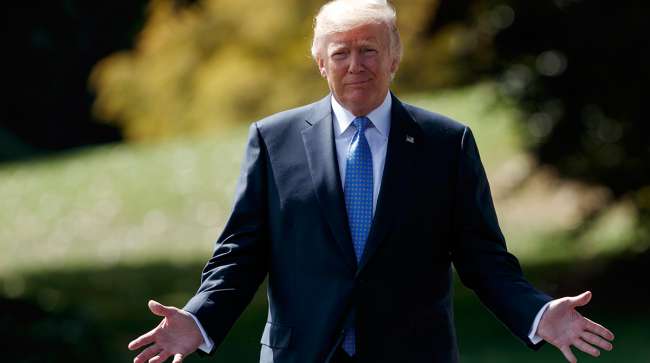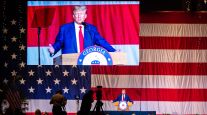Trump Sends Mixed Signals on Steel Tariffs, Canada, Mexico and NAFTA

President Trump suggested March 5 he may end steel tariffs on Mexico and Canada if they give him better trade terms while re-negotiating the North American Free Trade Agreement.
Trump did not provide many details in a pair of tweets, except to say that Canada “must treat our farmers much better,” while Mexico “must do much more on stopping drugs from pouring into” the United States.
“NAFTA, which is under renegotiation right now, has been a bad deal for U.S.A.,” Trump tweeted. “Massive relocation of companies & jobs. Tariffs on Steel and Aluminum will only come off if new & fair NAFTA agreement is signed.”
RELATED: Trump’s steel and aluminum trade threat hangs over NAFTA talks
Shortly after noon March 5, Trump said “we’re not backing down” on tariffs. “We had a very bad deal with Mexico, we had a very bad deal with NAFTA.”
He said the tariffs “could be a part of NAFTA.”
Contrary to Trump’s claims, the United States has a trade surplus with Canada.
Canada is also the top exporter of steel and aluminum to the United States, and the biggest importer of American steel and aluminum.
Trump’s tweets kicked off a week in which he plans to sign new tariffs of 25% on steel imports and 10% on aluminum imports, a move that has drawn criticism from economists who say it will spark a trade war and higher prices for consumers worldwide.
While the tariffs are targeted more at China, other countries may be affected. Officials in Canada, Mexico, and other nations have attacked Trump’s plan, and some say they may authorize counter-tariffs targeting American products from bourbon to blue jeans.
RELATED: Trudeau threatens to leave NAFTA rather than ‘take any old deal’
Aides said there are no plans for exemptions, but that Trump could always decide otherwise.
“He has made a decision at this point, 25 and 10,” said Commerce Secretary Wilbur Ross, speaking Sunday on NBC’s Meet The Press. “If he for some reason should change his mind, then it’ll change.”
The president also left his plans unclear, tweeting later in the day: “To protect our Country we must protect American Steel! #AMERICA FIRST.”
Trump made trade a major focus of his 2016 presidential campaign, claiming other countries were taking advantage of the United States.
He pledged to place tariffs on foreign products and threatened to end the North American Free Trade Agreement with Canada and Mexico unless they signed off on changes to NAFTA, the subjects of ongoing negotiations.
Many Republican allies of Trump oppose the tariff plan. In addition to concern about higher prices, they said American jobs could be lost in industries that rely on steel and aluminum.
“For every steel worker job that might be saved because of a tariff, our country will lose even more American jobs in auto plants, construction, and so many other industries,” said David McIntosh, president of the anti-regulation Club for Growth.
Citing political as well as economic impacts, McIntosh said that “tariffs will also harm the pro-growth effects of the tax cuts, stall the economy, incite a trade war, and help hand the (2018 congressional) election to the Democrats.”
Distributed by Tribune Content Agency, LLC




